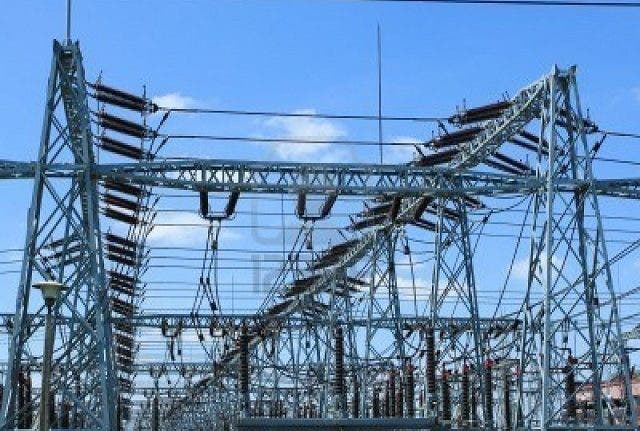HEALTH Stroke: A Silent Killer
Although, the incidence of stroke is in the ascendancy globally, it has assumed a frightening dimension in Nigeria where about 190,000 people suffer the ailment annually. More worrisome is the fact that even young people are becoming very vulnerable to the disease which, before now, was only associated with the elderly.
Of late, stroke, an ailment that cripples the affected limbs of those impacted, has become a recurring issue in Nigeria’s health sector. Related to hypertension, which has been appropriately tagged the silent killer, stroke is about the most referenced non-communicable disease in the country. In fact, so prevalent now that many informed interests are warning that unless checked, it could endanger the country’s economy, since most of its victims suffer whittled productive capacity.
Overview
A stroke occurs when the blood supply to part of the brain is interrupted or severely reduced, depriving brain tissue of oxygen and nutrients. Within minutes, brain cells begin to die.
A stroke is a medical emergency. Prompt treatment is crucial. Early action can minimize brain damage and potential complications.
Symptoms
These signs and symptoms show that someone may be having a stroke. Note when signs and symptoms begin, because the length of time they have been present may guide treatment decisions. They include:
I. Trouble with speaking and understanding, experiencing confusion, slurring of words or having difficulty understanding speech.
II. Paralysis or numbness of the face, arm or leg, developing sudden numbness, weakness or facial paralysis, arm or leg, especially on one side of the body. Similarly, one side of the mouth may droop.
III. Trouble with seeing in one or both eyes, developing sudden blurred or blackened vision in one or both eyes.
IV. Headache. A sudden, severe headache, which may be accompanied by vomiting, dizziness or altered consciousness, may indicate onset of having a stroke.
V. Trouble with walking. Stumble or experiencing sudden dizziness, loss of balance or of coordination may also be a sign.
VI. The next step is to seek immediate medical attention if there is every noticeable sign or symptoms of a stroke, even if they seem to fluctuate or disappear.
In hospitals, doctors advise patients to do the following if they suspect stroke: Face -ask the person to smile. Does one side of the face droop? Arms -ask the person to raise both arms. Does one arm drift downward? Or is one arm unable to be raised? Speech -ask the person to repeat a simple phrase. Is his or her speech slurred or strange?
If you observe any of these signs, do not wait, even if the symptoms go away. Every minute counts. The longer a stroke goes untreated, the greater the potential for brain damage and disability.
Causes
A stroke occurs when the blood supply to your brain is interrupted or reduced. This deprives your brain of oxygen and nutrients, which can cause your brain cells to die.
A stroke may be caused by a blocked artery (ischemic stroke) or the leaking or bursting of a blood vessel (hemorrhagic stroke). Some people may experience only a temporary disruption of blood flow to their brain (transient ischemic attack, or TIA).
Types of Stroke
Ischemic Stroke
About 85 per cent of strokes are ischemic strokes. Ischemic strokes occur when the arteries to the brain become narrowed or blocked, causing severely reduction in blood flow (ischemia). The most common ischemic strokes include:
Thrombotic stroke. A thrombotic stroke occurs when a blood clot (thrombus) forms in one of the arteries that supply blood to the brain. A clot may be caused by fatty deposits (plaque) that build up in arteries and cause reduced blood flow (atherosclerosis) or other artery conditions.
Embolic stroke. An embolic stroke occurs when a blood clot or other debris forms away from the brain — commonly in the heart — and is swept through the bloodstream to lodge in narrower brain arteries. This type of blood clot is called an embolus.
Haemorrhagic stroke: It occurs when a blood vessel in the brain leaks or ruptures. Brain haemorrhages can result from many conditions that affect the blood vessels, including uncontrolled high blood pressure (hypertension), over-treatment with anticoagulants and weak spots in the blood vessel walls
(aeneurysms).
Types of haemorrhagic stroke include:
Intra-cerebral haemorrhage. In an intra-cerebral hemorrhage, a blood vessel in the brain bursts and spills into the surrounding brain tissue, damaging brain cells. Brain cells beyond the leak are deprived of blood and also damaged.
High blood pressure, trauma, vascular malformations, use of blood-thinning medications and other conditions may cause an intra-cerebral haemorrhage.
Sub-arachnoid haemorrhage: In a sub-arachnoid haemorrhage, an artery on or near the surface of the brain bursts and spills into the space between the surface of the brain and skull. This bleeding is often signaled by a sudden, severe headache. A subarachnoid hemorrhage is commonly caused by the bursting of a small sack-shaped or berry-shaped out-pouching on an artery known as an aneurysm. After the hemorrhage, the blood vessels in the brain may widen and narrow erratically (vasospasm), causing brain cell damage by further limiting blood flow.










